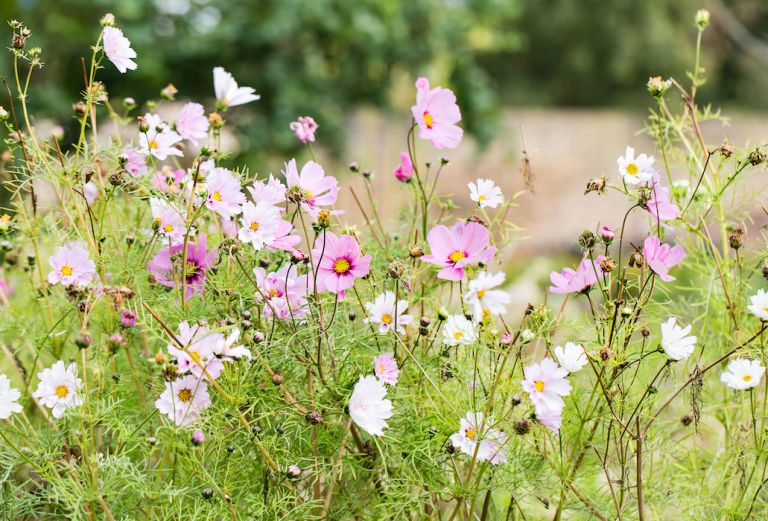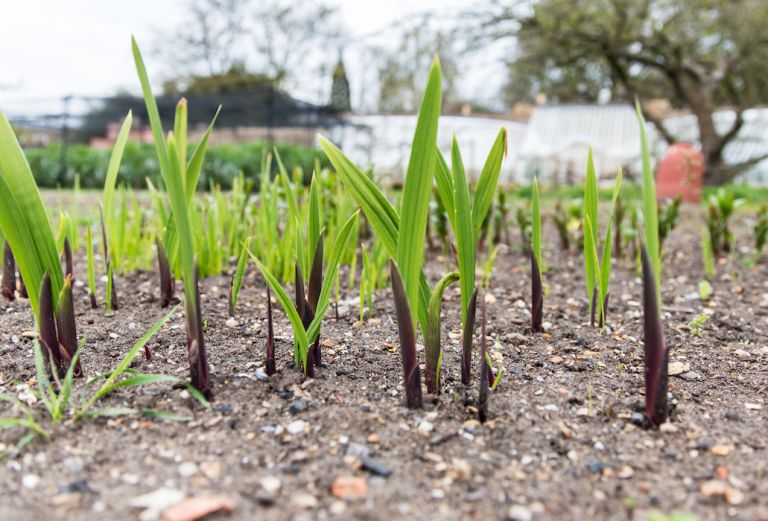Going green
Fulham Palace Trust continues to place carbon reduction and environmental issues at the heart of its work. We all face an ecological and climate emergency that threatens the future of our planet.

For over 1,000 years Fulham Palace has been a green oasis in this corner of west London. The botanical endeavours of various Bishops of London have created stunning gardens and introduced exotic plant species to the country. Today our beautiful garden is open seven days a week, free of charge and enjoyed by all who visit.
It is three years since we launched our biodiversity and climate change policy. This year our focus is on building a new pond and a new greenhouse, replacing the halogen lights in our library and carrying out an energy audit. At the same time, we continue to widen the debate on environmental issues to include the discussion of the decolonisation of horticulture.
Siân Harrington, chief executive of Fulham Palace Trust

The 13-acre site of Fulham Palace that you see today is a remnant of a once extensive country estate on the banks of the River Thames, stretching from Chiswick in the west, to Chelsea in the east, and up to Willesden in the north. It was owned by the Bishops of London from 704 to 1974 and was his country house from the 14th century.
Over the past 17 years, the restoration of Fulham Palace has delivered within this green space a museum, café, shop, education centre, wedding & events venue, residential accommodation and commercial office space. The income we are able to generate from these sources enables the Trust to provide free access to the garden 365 days per annum.
In the garden, we have re-introduced plant varieties first grown at the Palace over 300 years ago (many for the first time in the UK and even Europe), established a range of volunteer roles including gardeners, beekeepers and green woodworkers, and re-planted the walled garden where we produce organically-grown fruit, flowers and vegetables for sale on our market barrow. Alongside this, our learning and engagement programme provides opportunities for involvement for a range of audiences and volunteers. The result is a freely accessible green lung in the heart of London, helping to tackle the nature deficit for people living in the city.
The Palace site has many important statutory designations such as scheduled monument status, Grade I & II listed buildings and a Grade II* listed garden. The Palace grounds are part of, alongside Bishop’s Park and All Saints Churchyard, a non-statutory Site of Importance for Nature Conservation (SINC) that is designated of ‘Borough Grade 1’ importance.
We cannot return the site to a past ecology due to the scale of the architectural and landscape interventions by previous Bishops of London over 1,300 years. Furthermore, we must now plan for a resilient future in the light of climate change.
Future plans for developing and supporting the site’s ecology will be based on available evidence and expert advice from London’s natural history community and urban ecology specialists. These must take account of the site’s various historic and landscape designations.

Fulham Palace Trust is committed to:
- introducing sustainable and environmentally sound horticultural practices;
- measuring the local climate at our weather station and informing our visitors about the changes we are seeing in our garden;
- encouraging and inspiring visitors, volunteers, staff and tenants to reduce their own pollution and carbon footprint;
- reflecting ecology and climate issues in our events programming;
- using green electricity and gas tariffs;
- using environmental and energy efficiency best practices when managing our estate, and when undertaking restoration and improvement. more planting schemes in its gardens which encourage biodiversity;
- carrying out sustainable and environmentally sound horticultural practices;
- measuring the local climate at our weather station and informing our visitors about the changes we are seeing in our garden;
- encouraging and inspiring visitors, volunteers, staff and tenants to reduce their own pollution and carbon footprint;
- reflecting ecology and climate issues in our events programming;
- using green electricity and gas tariffs;
- using environmental and energy efficiency best practices when managing our estate, and when undertaking restoration and improvement.
In 2025/26 our renewed focus on our buildings and facilities includes the following:
- We will be undertaking bee surveys on site with the help of the London Natural History Society.
- We will be further improving our waste segregation to include the separate collection of all food waste from all our staff areas, kitchens and kitchens. This will be alongside our composting waste stream. Our waste contractor will be turning our food waste into energy.
We call on our local community to look at how they can help, at home, and at Fulham Palace. Three small changes can make an impact in a positive way, we encourage you to choose from the suggestions below:
- Check with your local authority where you can recycle all waste, including batteries, clothes, electrical items etc. (More information for Wandsworth and Hammersmith & Fulham residents can be found online.)
- Start using refillable cleaning products – available from a wide range of suppliers.
- Save rainwater or ‘grey water’ from washing up to water your plants.
- Use a reusable cup for hot drinks when on the go (although at the Palace we will compost your cup!).
- Use cardboard egg boxes for sowing your own plug plants, then you can plant straight out with the egg box cell still intact and the cardboard will rot once replanted.
- Put a bug hotel up on a south-facing outside wall, fence or balcony to help beneficial insects such as ladybirds, lacewings and hoverflies through the winter
- If you have a lawn, allow a patch of grass to grow long and leave it uncut until the following June. This will help overwintering insects to remerge successfully.

This declaration follows a number of changes the Palace has made to green its working practices.
Already the Palace has undertaken the following work:
- We have undertaken plant, moth, butterfly and bird surveys to provide a baseline measuring the impact of the future changes we make.
- We now have a well-established volunteer programme in the garden consisting of about 70 garden, bee-keeping and green wood-working volunteers.
- We have planted over 120 fruit trees (apples, pears, peaches, almonds) in the walled garden since 2012 and planted over 100 species of plant in our Cultivating Compton beds in 2019, massively diversifying the range of plants on the site.
- We have a succession of flowers throughout most of the year starting with early daffodils selected for their benefits to pollinators.
- We are growing fruit and vegetables in our walled garden according to organic principles, for sale on our market barrow, contributing to local health and wellbeing.
- We use biological controls to control pests in the vinery and orchard.
- We have installed a water collecting tank which we use to water plants in the walled garden.
- We leave patches of nettles and have established log piles throughout the site.
- We use brushwood to stake our perennial plants using sustainable coppices of hazel on the site.
- We make homemade wigwam structures and leave them up over winter as we have found them to be hibernating habitats for ladybirds and other beneficial insects.
- We have introduced small pocket ponds which provide opportunities for water habitats
- We have created special Palace mixes of grassland plants that fit the history of the Palace with the aim of creating resilience against future climate change.
- We have changed light bulbs in the buildings over to LED lights wherever possible and installed installation in our roof spaces in our recent restoration project.
- We make sure that all takeaway cups, plates and cutlery in the café are biodegradable and are now composted by the garden team alongside coffee grounds, fruit and vegetable waste from the café.
- The weddings and functions menu now includes a ‘no waste’ option.
- We are collecting the chicken manure from our Pekin bantam chickens and will use it as plant feed for the box hedge in the knot garden.
- We have been running an apple day community event for eight years, highlighting the traditional celebration of the harvest and focussing on our homegrown apples and honey.
Going forward we are making the following commitments:
- To hold an annual green meet celebration to mark Earth Day (this year’s event will take place on 11 May) and continue to develop our apple day message of seasonality and food miles.
- We will pursue our action plan for long-term habitat management. This will include supporting natural regeneration and, where suitable, planting environmentally resilient and ecologically suitable plantings as well as other measures to support biodiversity.
- We will continue to monitor developments in the garden machinery market and introduce battery-powered equipment as it becomes proven technology.
- We will continue to put up more bird boxes and bat boxes.
- We will produce a long-term tree planting and natural regeneration plan to ensure that we have different age cohorts of trees and that we are managing our tree stock with the long-term aim of supporting biodiversity and that fits the history of the Palace.
- We will support trees in crisis such as ash and elm, allowing them to grow in the hope that some will have resistance to disease, and if they die we will use their trunks for log piles and create greater habitat diversity.
- We will engage a wider range of visitors and community groups to access the Palace and the work we are doing in the areas of biodiversity and climate change through workshops and talks.
- We will investigate the longer-term possibility of re-introducing water into the moat which will provide opportunities for other water habitats in addition to the pond established in 2024.
- We will always consider green energy suppliers when renegotiating our energy contracts as well as considering green energy systems such as air source heat pumps and solar panels when refurbishing or building on site, subject to planning and scheduled ancient monument restrictions.
Learn more and read the full 2025/26 biodiversity & climate change resilience policy.
